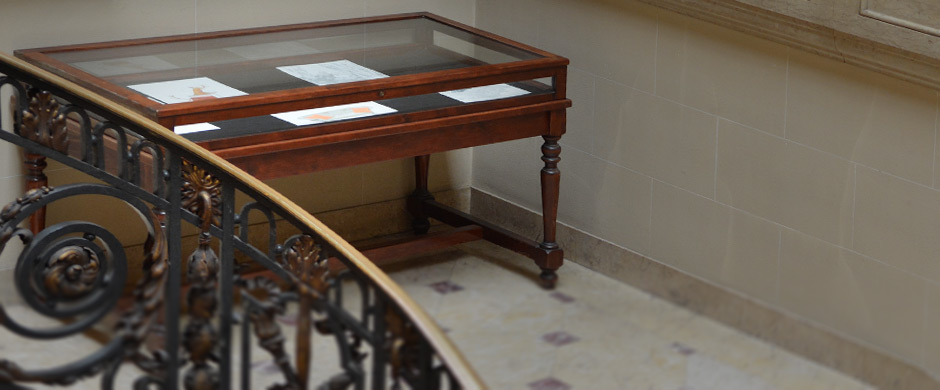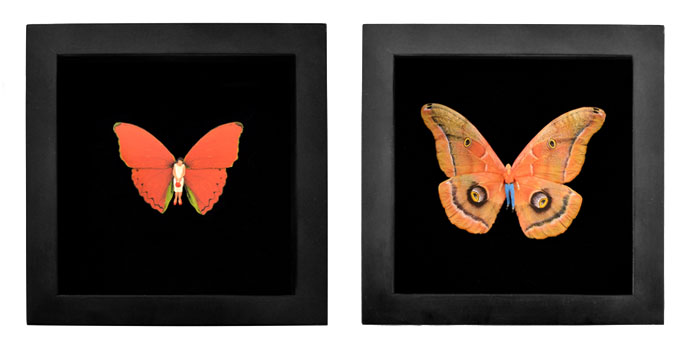 | On Display
| On Display

Display Cases in the Great Hall: Exhibition Archive
Walter Martin and Paloma Muñoz
1 June to 30 June 2015
CROSS-POLLINATION
Entomological boxes by Walter Martin and Paloma Muñoz contain a selection of composed butterflies and moths, assembled from the wings of Lepidoptera gathered from all over the world, and joined to tiny human bodies. In nature, the role of these flying insects is pollination, gathering a dusting of pollen along their legs, and carrying it from one plant to another. Delicate color and dramatic markings attract mates, and allow Lepidoptera to dissemble in the presence of predators. Martin and Muñoz cross-pollinated human with Lepidoptera fusing them into new forms.
Butterflies, generally diurnal creatures, and moths, active at dusk and at night, differ in several ways. The antennae of the butterfly are smooth slender filaments, while those of the moth are fringed or feathery with cilia. When basking, or resting, moths keep their wings flat and open, splayed, whereas butterflies often fold their wings so the tips are joined. As collectors of this order of insects, Martin and Muñoz join company with such erudite and creative lepidopterists as Vladimir Nabokov.
In this series, Lepidoptera are combined with tiny bodies of people in various everyday activities, referring to a medieval tradition of representing the “offices” of daily work: a woman holding a basket of laundry, a businessman with tiny briefcase, a musician playing a saxophone. The body of Morpho Menelus, from Guyana, is a woman cradling a baby wrapped in a pink blanket. Shimmering blue wings are a dazzling contrast to the mundane figure; the name embodies change. A tiny red-headed leprechaun, outfitted in green and married to the Luna moth’s leaf-green wings, forms a creature named for its nighttime habits. Uranius Leilus from Peru, with slender lower wings, appears to be a butterfly, but is really a day-flying moth. Cymothoe Sangaris, an African species known as the red blood glider, butterfly, has saturated sanguine wings with green lips lining the lower inside wings. Martin and Muñoz paired exotic wings with a demure female figure in a sleeveless white shift, clutching a red purse and wearing matching red heels, her head slightly bowed. Pennsylvania’s giant Polyphemus moth has a single eye in each wing, recalling the man-eating Cyclops killed by Odysseus; his body is clad in jeans. In each case, the artists have captured some essentially human quality of the moth or butterfly, presenting them as specimens to be observed, and admired.

Case One: Moths and butterflies from North America, Asia, and Africa
Case Two: Butterflies and moths from North America, Asia, and Africa
All in mixed media. Dimensions vary from 4 x 4 inches to 7 x 7 inches.
All works courtesy of the Artists and PPOW Gallery
Curated by Lisa A. Banner
News
Walter Martin and Paloma Munoz appear in the 2017 Flag Art Foundation show "The Times."
Contact the Institute
Building Hours
Contact Information
If you wish to receive information on our upcoming events, please subscribe to our mailing list.



